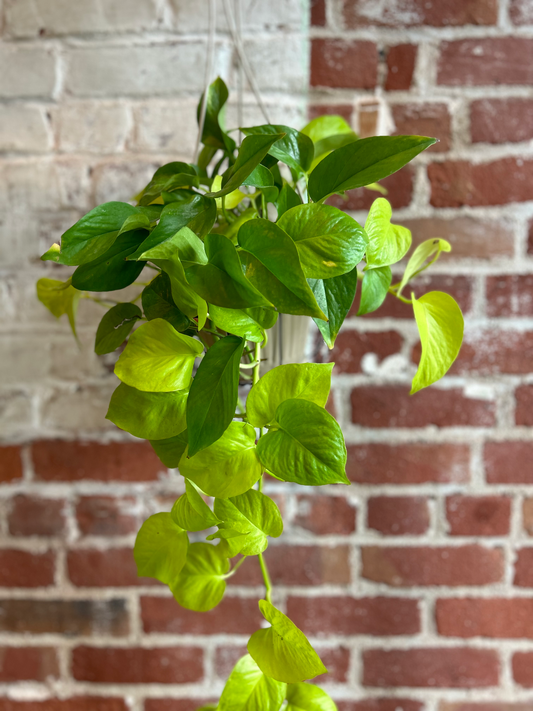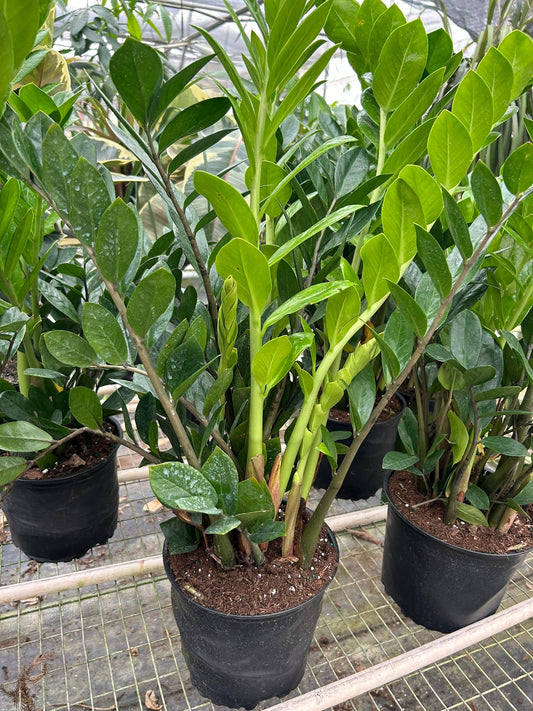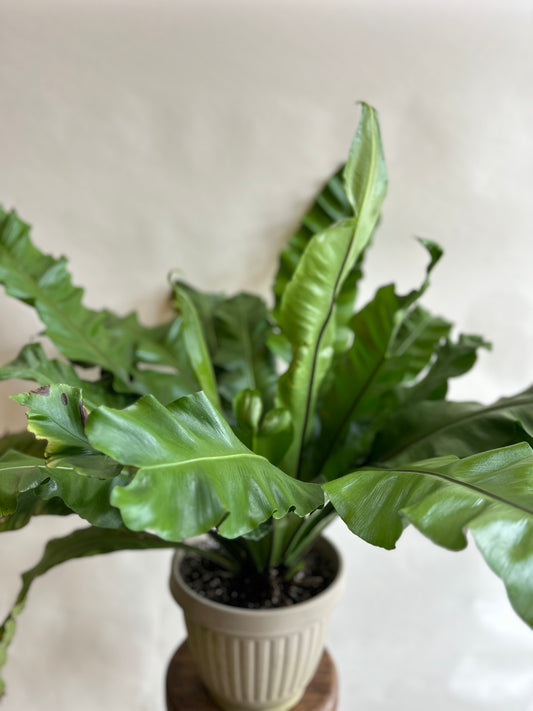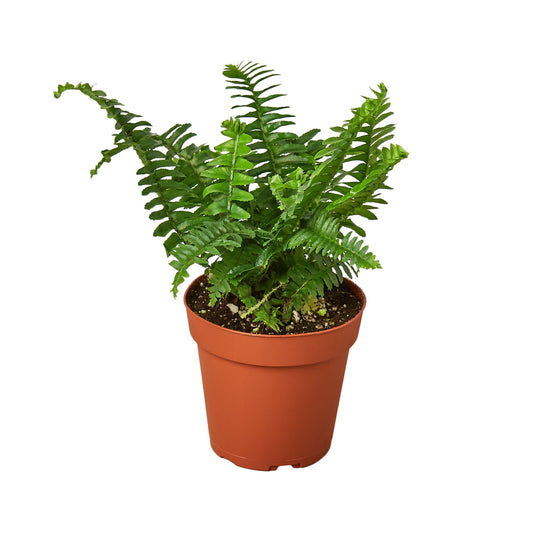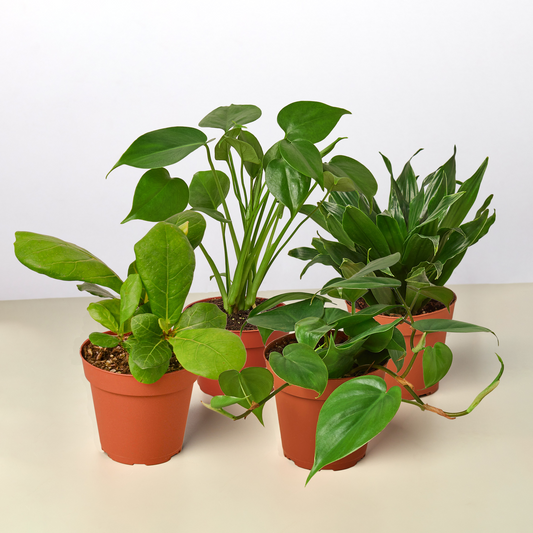What is the Best Soil Type for Euonymus Plants?
Cafe Planta Team
So, you've got yourself a Euonymus plant. Aren't they just lovely with their vibrant colors and versatility? But here's the thing: just like us, plants have their preferences. And for Euonymus, the type of soil you choose can make all the difference between thriving greenery and a plant that's just hanging in there.
Today, we'll chat about what kind of soil your Euonymus plants will love. We'll dig into soil composition, pH levels, drainage needs, and even how to whip up some homemade soil mixes. By the end, you'll know exactly how to keep your Euonymus happy and your garden or indoor plant collection looking fabulous.
Understanding Euonymus Plants
Before we get into the nitty-gritty of soil types, let's take a moment to understand what Euonymus plants are all about. These beauties are part of a large genus that includes over 130 species, ranging from evergreen shrubs to small trees. Known for their glossy leaves and sometimes colorful berries, Euonymus plants can add a touch of elegance to any garden or home.
Euonymus plants are quite adaptable. They can thrive in various climates and conditions, which is why you'll find them in gardens worldwide. Whether you're growing them as a hedge, a standalone shrub, or even as a potted plant indoors, they have a way of fitting in beautifully. But, like any plant, they have specific needs, and soil is at the top of that list.
The Basics of Soil Composition
Alright, let's talk soil. In the simplest terms, soil is composed of minerals, organic matter, air, and water. The proportions of these elements can vary, creating different soil types. For plants, soil serves as the foundation for rooting, nutrient absorption, and water retention.
Here’s a quick look at the main types of soil components:
- Sand: Coarse and gritty, sand has large particles that allow for good drainage but doesn't hold onto nutrients well.
- Silt: Finer than sand, silt feels smooth and holds moisture better but still offers decent drainage.
- Clay: Made up of very fine particles, clay retains moisture well but can lead to poor drainage and compaction.
- Organic Matter: This includes decomposed plant and animal material which enrich the soil, providing nutrients and improving soil structure.
For Euonymus plants, you'll want a soil mix that balances drainage and nutrient retention. It should be loose enough for air circulation but rich enough to support growth.
Soil pH and Why It Matters
Ever heard of soil pH? It's a measure of how acidic or alkaline your soil is. The pH scale runs from 0 to 14, with 7 being neutral. Numbers below 7 indicate acidity, while numbers above 7 indicate alkalinity.
Euonymus plants prefer slightly acidic to neutral soil, ideally with a pH between 6.0 and 7.0. If the pH is too low (acidic), it can limit nutrient availability and affect plant health. On the flip side, if the pH is too high (alkaline), it can lead to nutrient deficiencies.
Testing your soil's pH is pretty straightforward. You can purchase a test kit from a garden center or use a digital pH meter for more precision. If needed, you can adjust the pH by adding lime to raise it or sulfur to lower it. Always follow package instructions or seek professional advice when making adjustments.
Drainage: The Unsung Hero
Drainage might not sound glamorous, but it’s crucial for Euonymus plants. Too much water can lead to root rot, a condition where roots suffocate and decay. On the other hand, too little water can leave your plant parched and stressed.
To ensure good drainage, consider these tips:
- Choose the Right Pot: If you're growing Euonymus in a container, ensure it has drainage holes to let excess water escape.
- Add Gravel or Stones: A layer of gravel at the bottom of your pot can help improve drainage.
- Use Well-Draining Soil: Incorporate materials like sand or perlite into your soil mix to enhance drainage.
Whether you're planting in the ground or a pot, always aim for soil that retains moisture without becoming waterlogged.
Creating the Perfect Soil Mix
Now that we've covered the basics, it's time to create the perfect soil mix for your Euonymus plants. While you can buy pre-made mixes, making your own allows for customization based on your plant's specific needs.
Here’s a simple recipe to get you started:
- 1 part garden soil: Provides a base rich in natural nutrients.
- 1 part compost or aged manure: Enhances nutrient content and soil structure.
- 1 part perlite or sand: Improves drainage and prevents compaction.
Mix these components well before planting your Euonymus. If you're planting in a pot, make sure to fill it to about an inch below the rim to allow for watering without overflow.
Common Soil-Related Problems
Even with the best soil, problems can arise. Here are a few common issues and how to address them:
- Compacted Soil: If the soil becomes too dense, roots can struggle to grow. To fix this, aerate the soil by gently loosening it with a garden fork.
- Waterlogged Soil: Overwatering or poor drainage can lead to waterlogged soil. Ensure your pot has drainage holes, and consider reducing your watering schedule.
- Nutrient Deficiencies: Yellowing leaves or stunted growth may indicate a lack of nutrients. A balanced, slow-release fertilizer can help replenish essential nutrients.
Regularly checking your soil and making adjustments as needed can keep your Euonymus looking its best.
Seasonal Soil Care
Just as plants change with the seasons, their soil needs can vary too. During the growing season (spring and summer), Euonymus plants will benefit from rich, nutrient-dense soil. This can be achieved with regular applications of compost or a balanced fertilizer.
In autumn and winter, growth slows down, and the focus shifts to maintaining soil health. Reduce fertilization and ensure any fallen leaves or debris are cleared to prevent disease.
Adjust your watering schedule to account for seasonal rainfall and temperature changes. In winter, be cautious of overwatering, as colder temperatures can affect evaporation rates.
Potting and Repotting Euonymus
Potting and repotting are crucial for potted Euonymus plants. Over time, soil can deplete, and roots may outgrow their space, leading to a need for repotting.
When repotting, choose a pot that's one size larger than the current one. Carefully remove the plant, gently loosen the roots, and replant it in fresh soil. This refreshes the nutrient supply and gives roots room to grow.
Remember to water your plant thoroughly after repotting to help it settle into its new home. Repotting is best done in early spring before the growing season kicks into high gear.
Using Mulch for Euonymus
Mulch can be a great addition to your Euonymus care routine. It helps retain soil moisture, suppress weeds, and regulate soil temperature. Organic mulches, such as shredded bark or wood chips, also add nutrients as they break down.
Apply a 2-3 inch layer of mulch around your Euonymus plants, being careful not to pile it against the stem or trunk. This can prevent issues like rot or pest infestations.
Refresh your mulch layer annually to maintain its benefits and keep your garden looking tidy.
Final Thoughts
Choosing the right soil for your Euonymus plants is about understanding their needs and creating a nurturing environment. With the right balance of nutrients, drainage, and care, your Euonymus can thrive, adding beauty and vitality to your space.
At Cafe Planta, we're passionate about helping you succeed in your plant journey. Whether you need advice or a new plant to brighten your home, we're here to assist. Feel free to email us or reach out on Instagram. Let's grow together!


